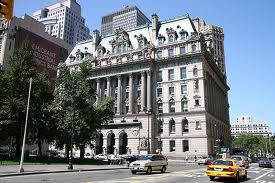 Inquiries are often made of our firm as to whether a claim can be made which may dispute the terms of another person’s Will and the proper time and legal mechanism for doing so. This post will address the issues that arise in a Will contest. As our readers may know , when a person dies with a Will, the proposed Executor must submit the original Will and other required documents to the Surrogate’s Court in the County in which the deceased resided and request that Letters Testamentary be issued appointing the person as Executor. This process is called probate.
Inquiries are often made of our firm as to whether a claim can be made which may dispute the terms of another person’s Will and the proper time and legal mechanism for doing so. This post will address the issues that arise in a Will contest. As our readers may know , when a person dies with a Will, the proposed Executor must submit the original Will and other required documents to the Surrogate’s Court in the County in which the deceased resided and request that Letters Testamentary be issued appointing the person as Executor. This process is called probate.
In the probate proceeding, the Surrogate’s Court will require a signed Waiver and Consent from all distributees (those who would inherit if there was no Will) or proof of service of a Citation should these parties be unwilling to sign the Waiver and Consent. The time between the service of the Citation on an objectant and the return date of the Citation (the date scheduled by the Court to hear objections to the admission of the Will to probate or else the proposed Executor will be appointed) is the appropriate time to submit objections to the Will.
New York statute grants broad authority to file objections to the probate of a Will. Essentially, any person who would be adversely affected if the subject Will is admitted to probate may file objections. One exception to this broad rule is that good cause must be shown if the basis of the objectant’s claim is the disqualification from receiving commissions as a fiduciary.
 New York Real Estate Lawyers Blog
New York Real Estate Lawyers Blog


 For various reasons, not everyone dies has a Will that disposes of their property and identifies the person authorized to manage such distribution. In such a case, the surviving heirs should
For various reasons, not everyone dies has a Will that disposes of their property and identifies the person authorized to manage such distribution. In such a case, the surviving heirs should  A recent article in the
A recent article in the  Prevailing law in New York State favors the making of a Last Will and Testament. The person making the Will (called the testator) may leave his property to any person that he chooses. However, those who would inherit if the testator did not make a Will, known as intestacy, have the
Prevailing law in New York State favors the making of a Last Will and Testament. The person making the Will (called the testator) may leave his property to any person that he chooses. However, those who would inherit if the testator did not make a Will, known as intestacy, have the  When an estate in New York is
When an estate in New York is  Shortly after the death of a loved one, survivors often contact us with respect to our
Shortly after the death of a loved one, survivors often contact us with respect to our